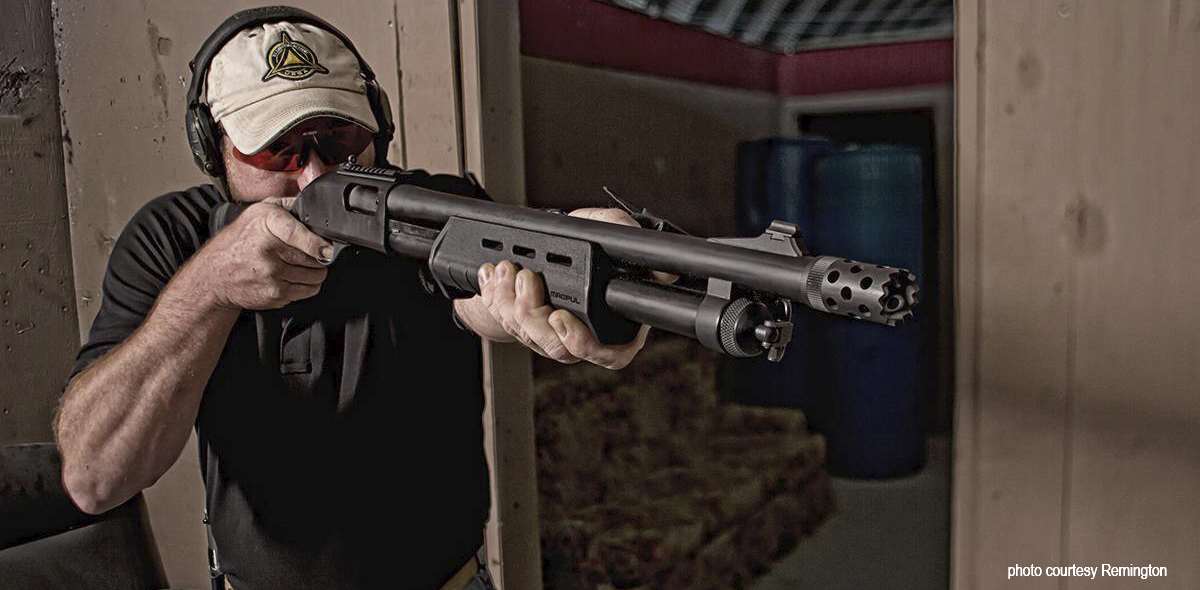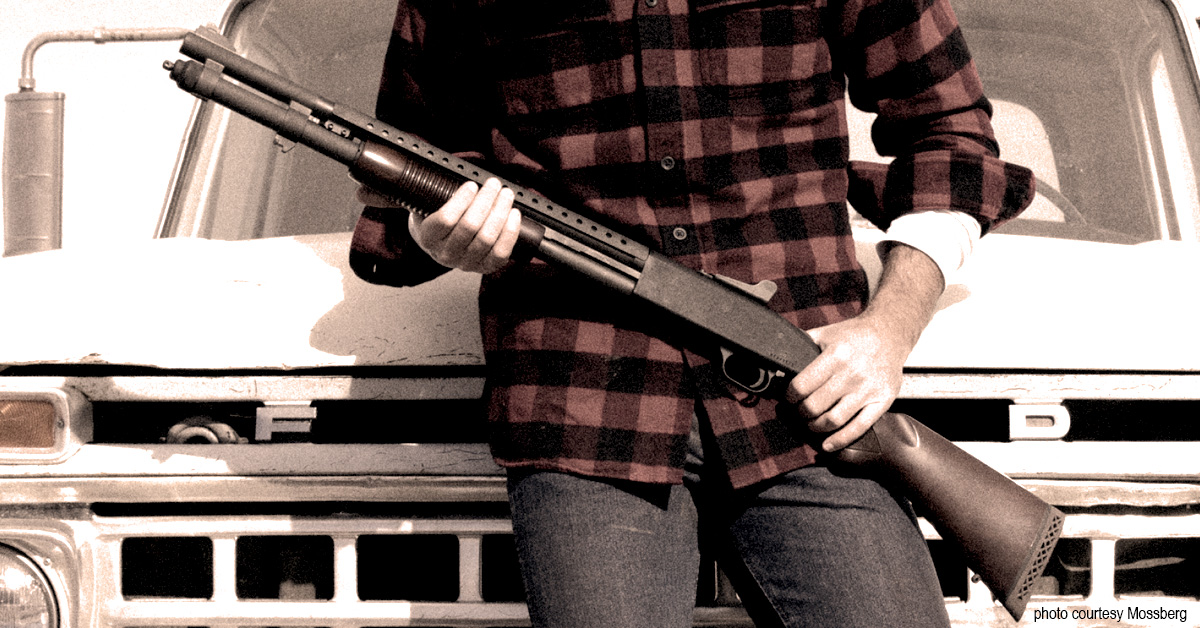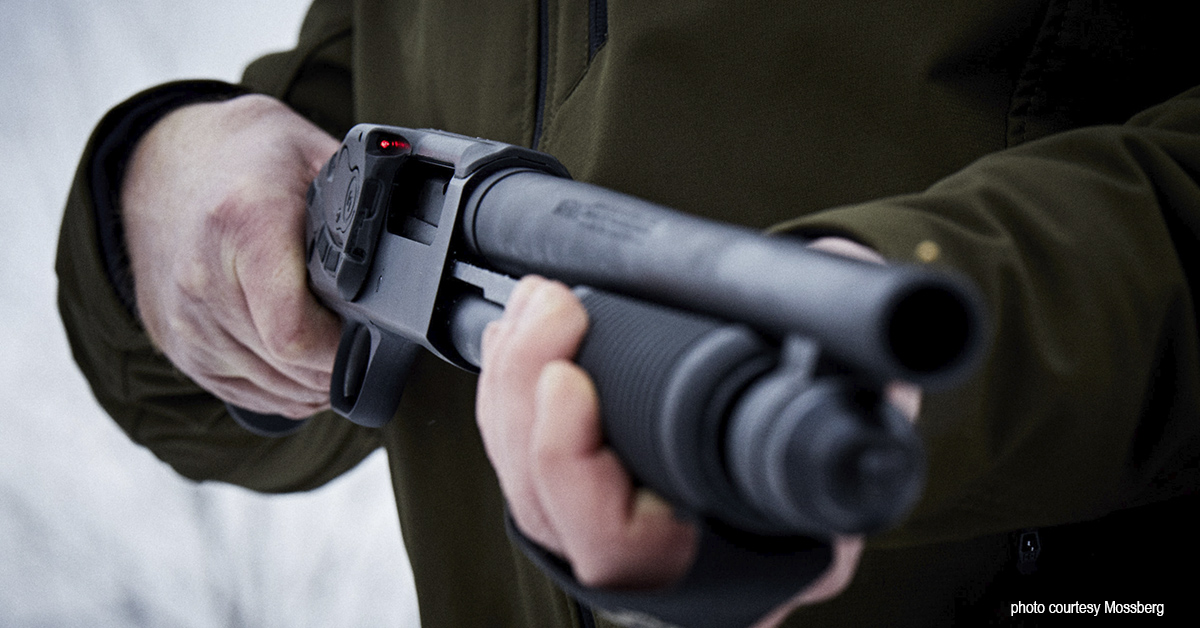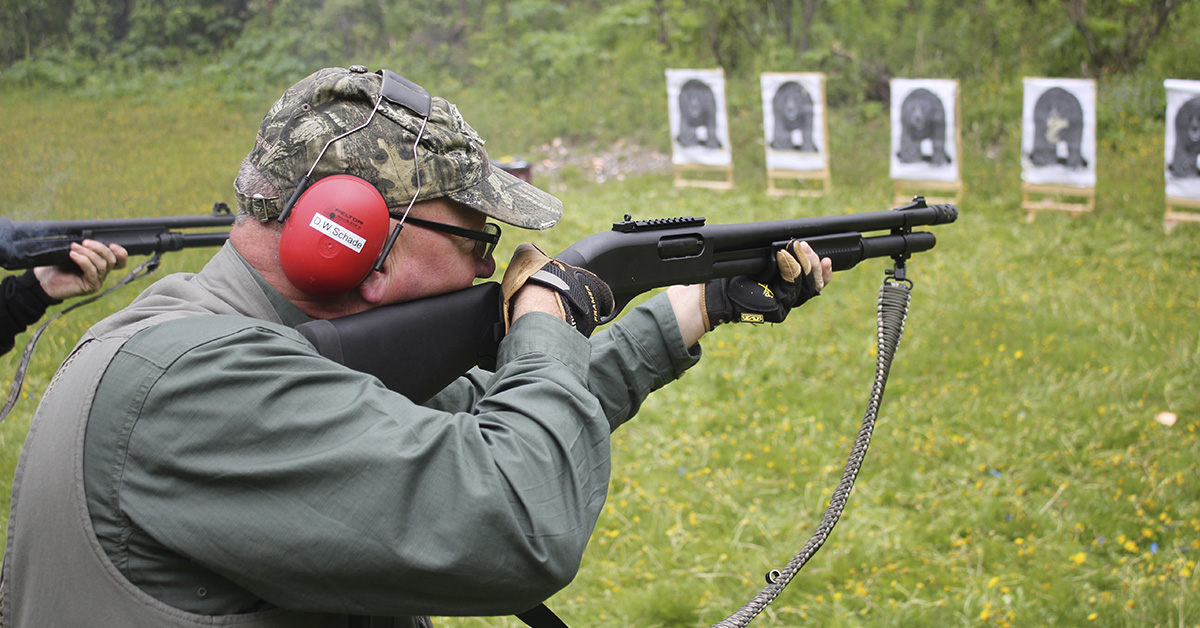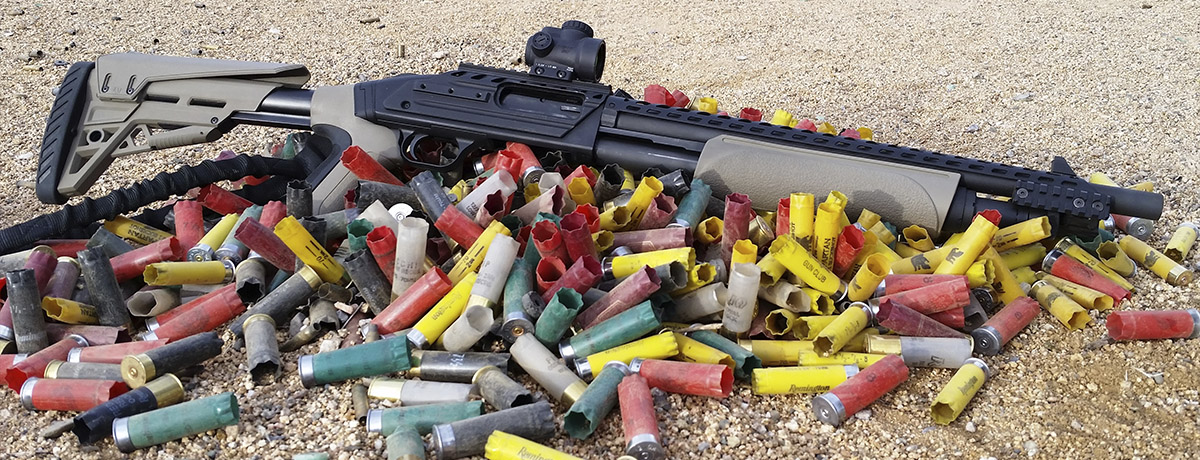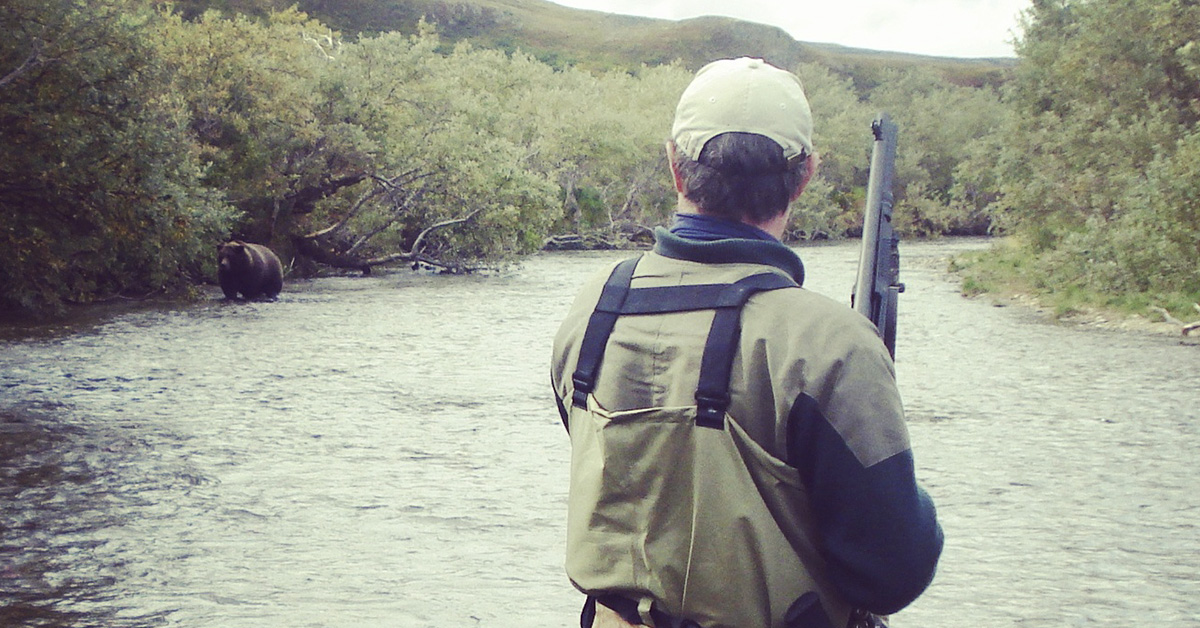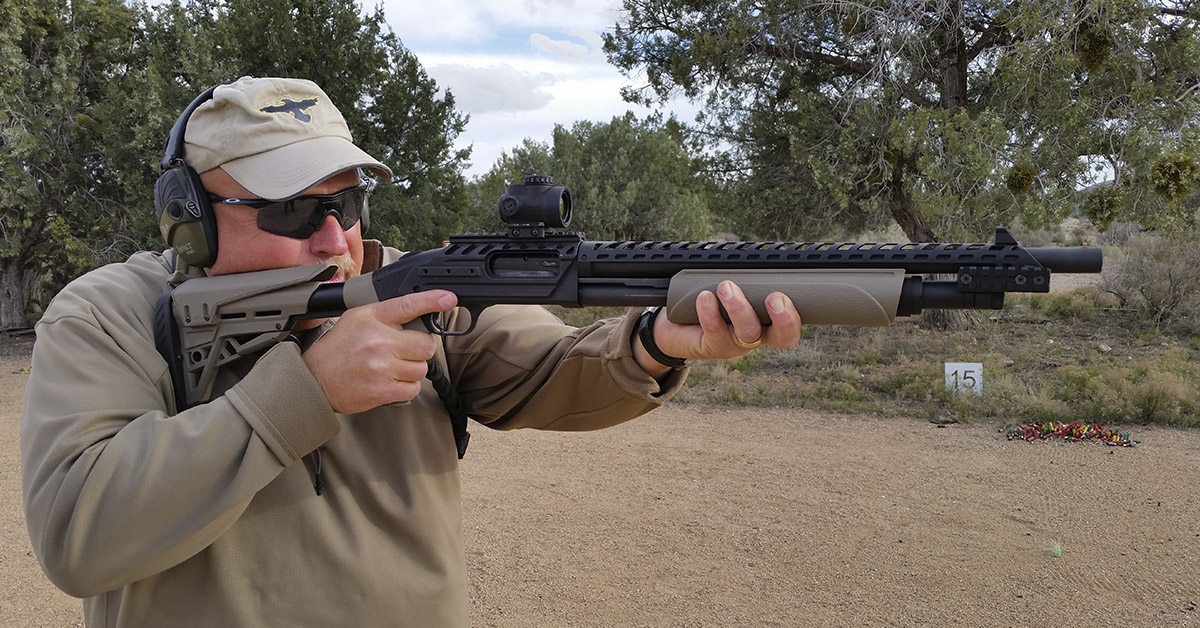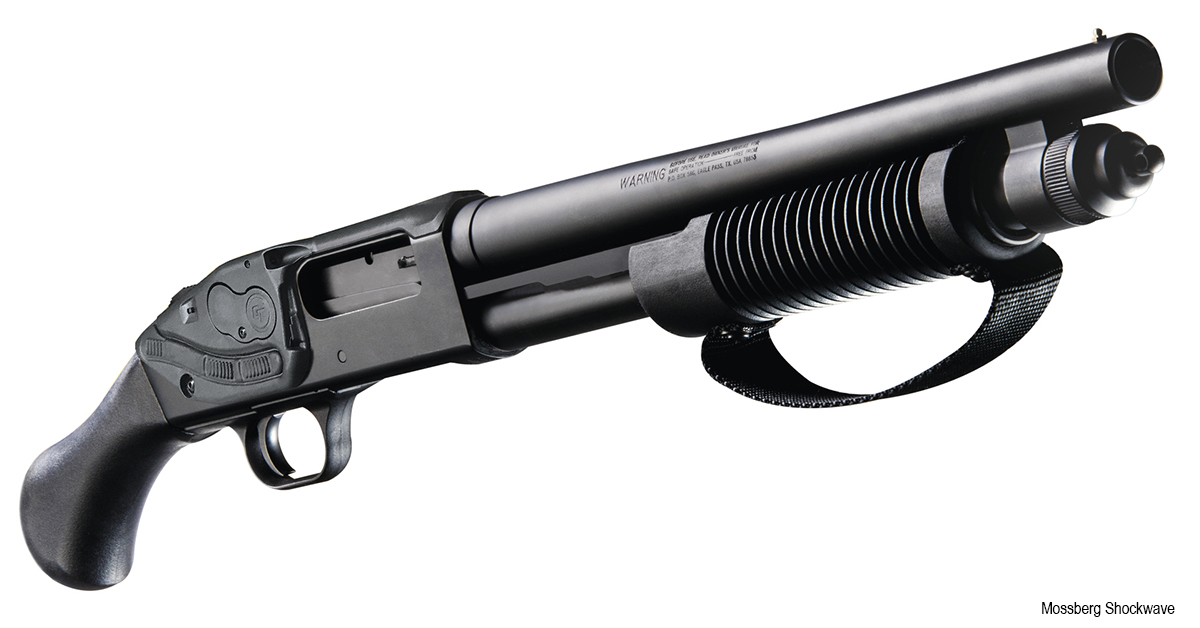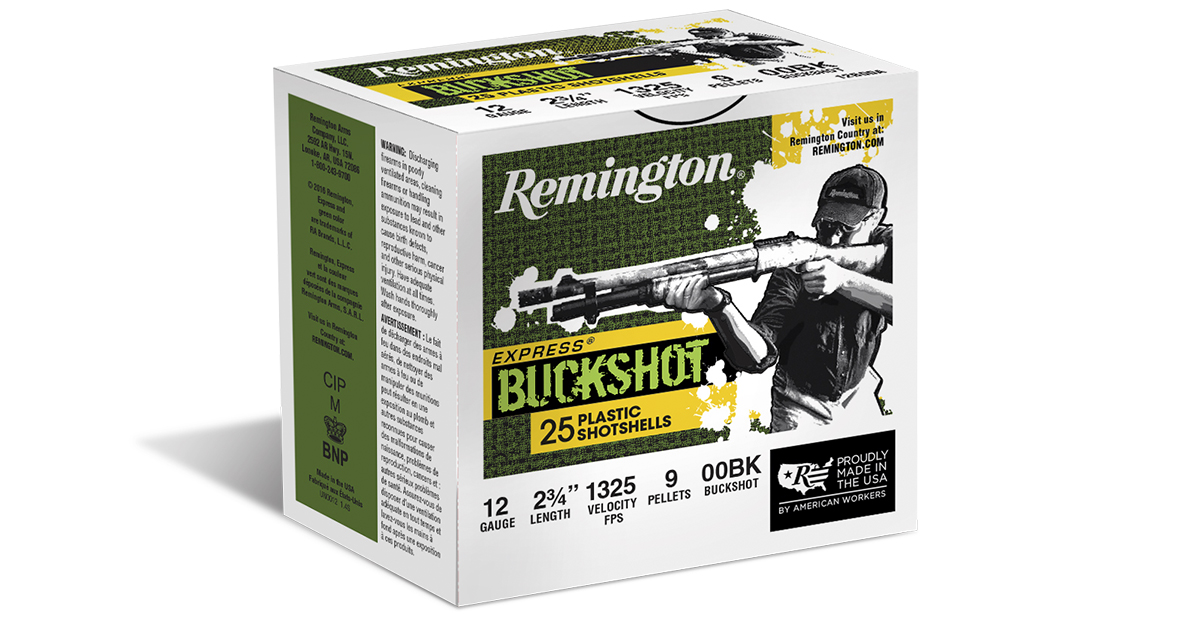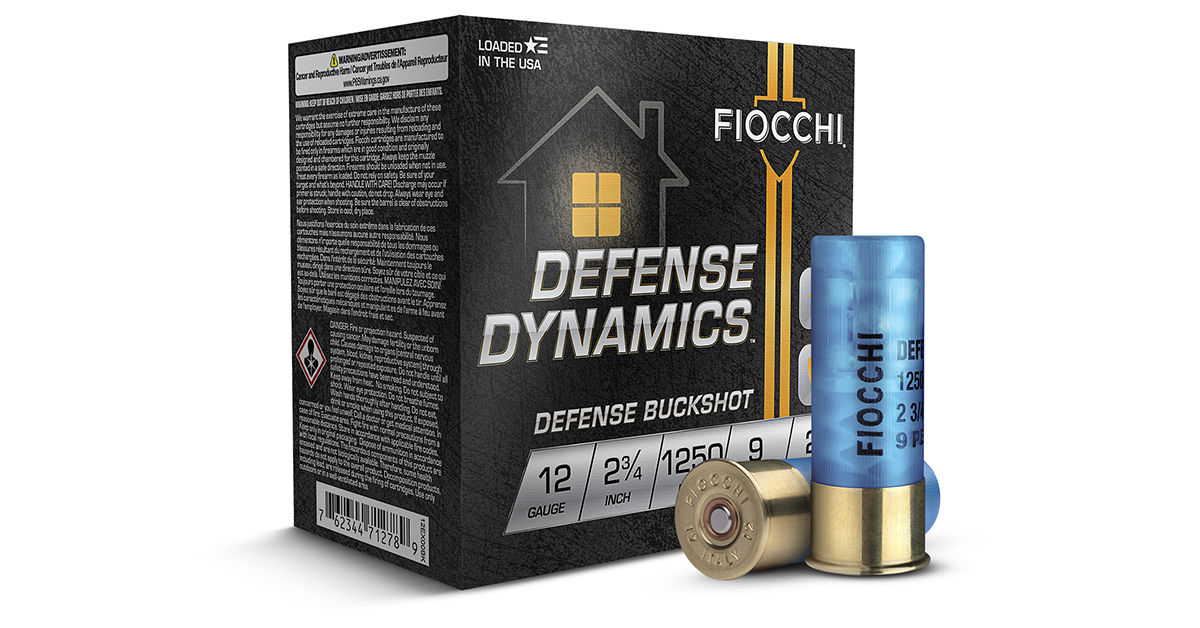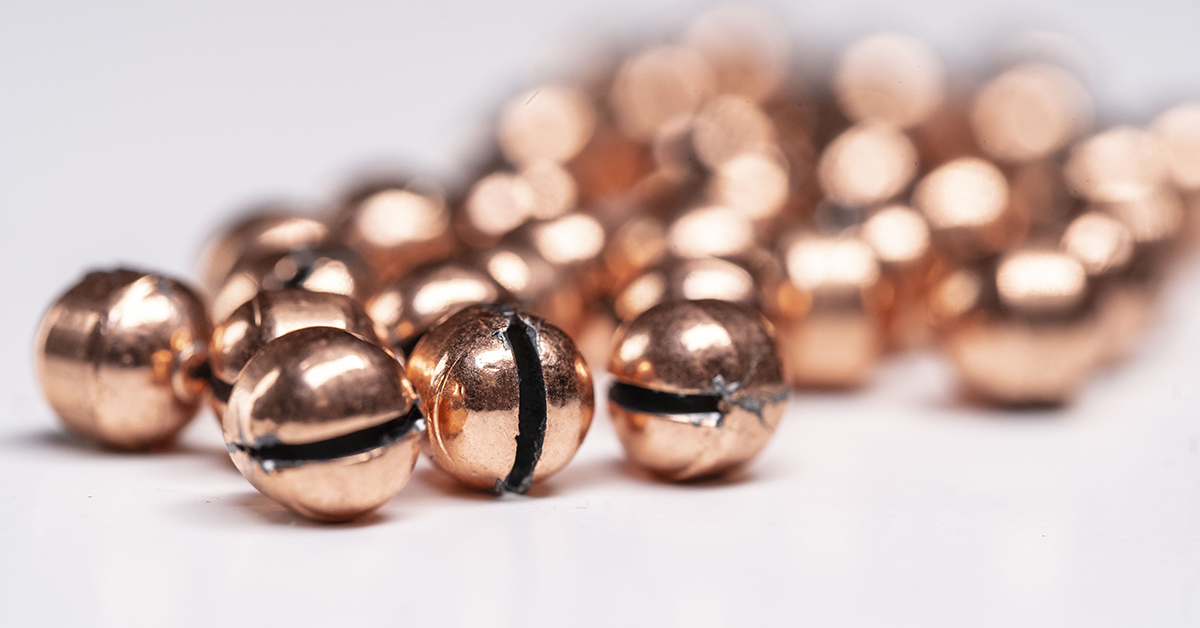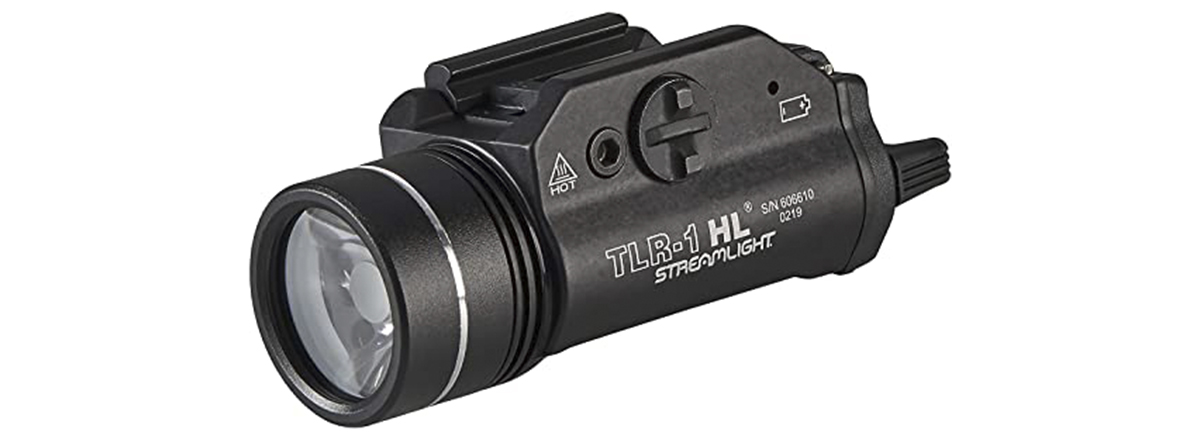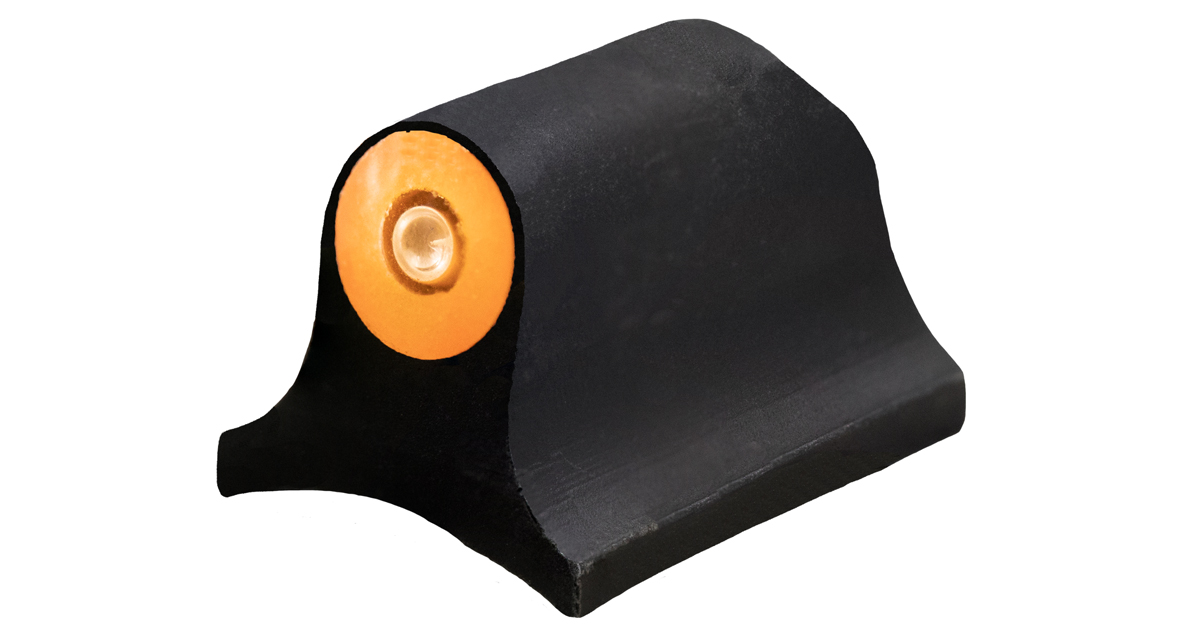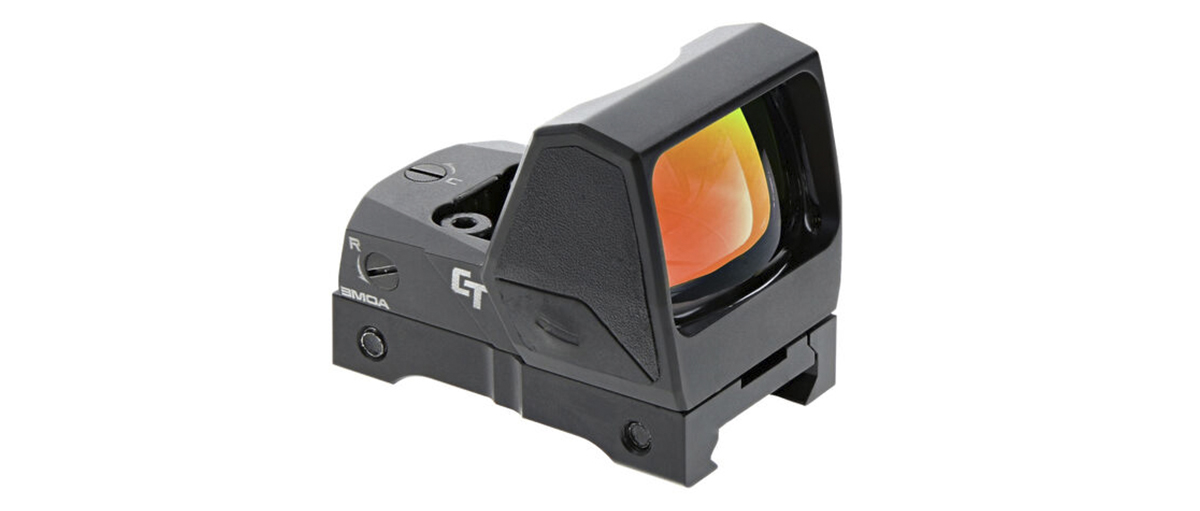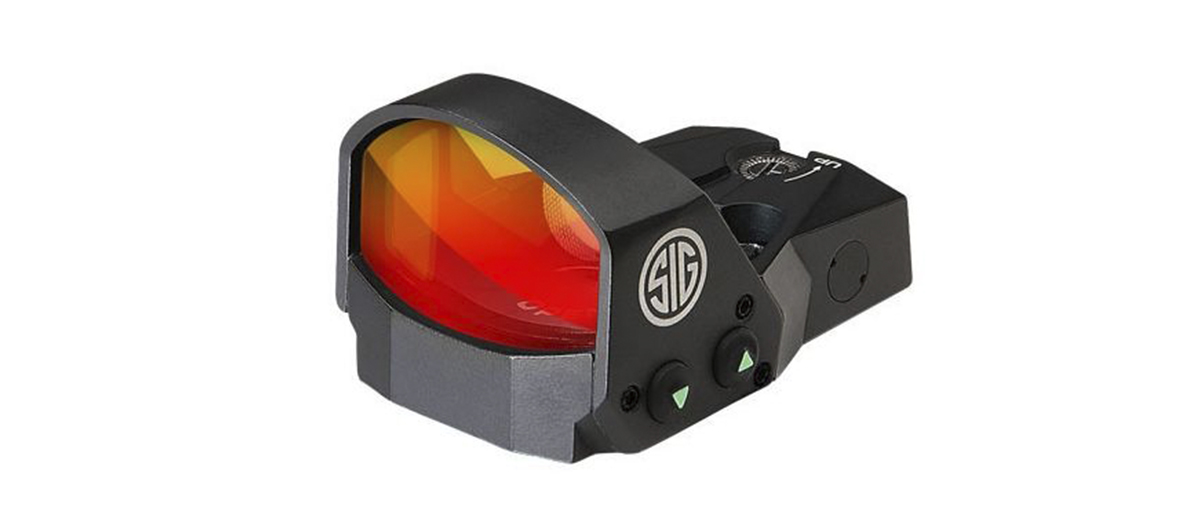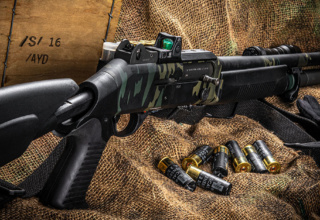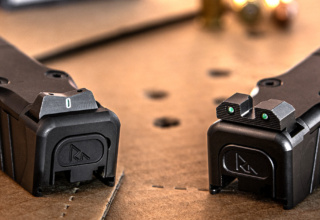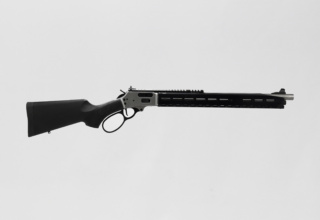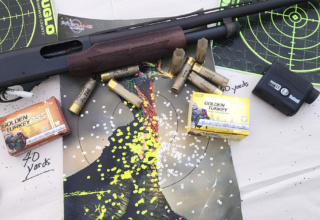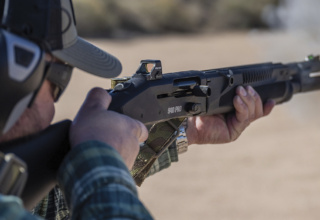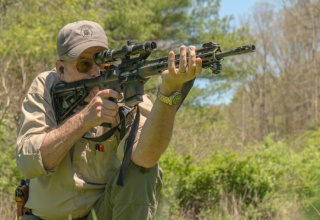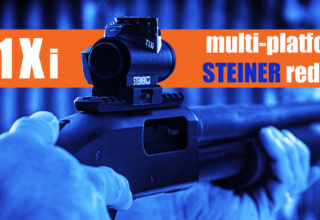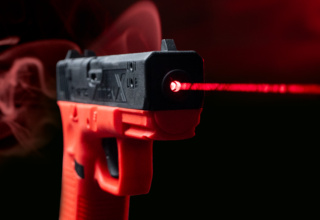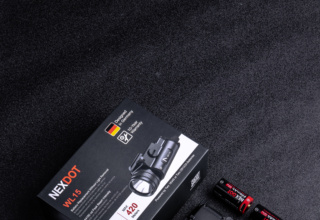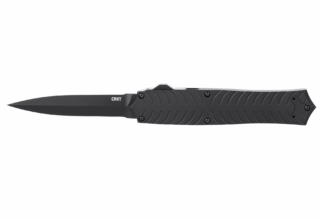Arguably the top choice for all-around defensive performance, the shotgun presents many points to ponder for the beginner
by Larry Case
The past few years have shown us some things in the USA that many thought we would never see. Rioting in the streets, civil unrest, and a “pandemic” that some of us think will never be over. All of this has the citizenry more focused on personal and home protection than ever before. Little wonder that gun sales have surged with millions of new gun owners. More and more people are buying guns with one thought in mind: protecting home and hearth.
Right after the much beloved 1911 pistol versus GLOCK handguns argument, maybe no other firearms topic enjoys as much debate as that of shotguns for home defense.
Advocates of the AR rifle platform and some pistol devotees will cry to high heaven when you talk about choosing the scattergun over their weapon of choice. But that doesn’t change the facts — the shotgun delivers more power and projectiles to be rained down upon your adversary.
Let’s be clear about something from the start. There should be no such thing as a “fair fight.” The moment a bad guy (or girl) approaches your home and family with malice aforethought, all bets are off. If they are there to hurt or kill you while taking your property, they get what is coming to them. With a shotgun, they get a massive amount of lead. If they come to the fight undergunned, that is their problem.
Why the shotgun? In my time of wearing a badge and toting a gun, I saw lots of people that had been shot, including many with shotguns. Some were murders, some were intruders in homes, and a lot were hunting-related shootings — people being mistaken for game or accidental discharges. One thing always surprised me: how many fatalities occurred with shotguns, even at a short distance. Though the pattern of the shot had acquired some spread, often, part of the shot would find its way to the victim’s vitals, and it was lights out.
But really, why is the shotgun best for home defense? It comes down to range and firepower. The range on most home and personal defense confrontations can be measured in feet, not yards. How big is your house? Unless you bought Graceland or a Hollywood mansion, your rooms are probably not overly large. If we move the fight outside, the shotgun is still the weapon of choice as we will still be at relatively close range. If we edge closer to the 50-yard line between you and your assailant, the rifle may become more effective, but as a shotgun guy, I will tell you I am going to switch to slugs. The pistol alternative is not effective at 50+ yards, as most of us will not be able to hit much at this distance.
Firepower could be defined as how much hot lead we can bring to bear on the target in the shortest amount of time. No firearm yet invented can protect us better from anyone who has entered our home uninvited and intends to bring harm to you and yours. Twelve-gauge 2 ¾-in. #00 buckshot loads generally contain eight or nine .33 caliber pellets per cartridge. If you fire three rounds at your aggressor in a home defense situation, you have delivered 24 .33 caliber projectiles in a short amount of time. Now, we can argue the choices in buckshot and shot size all you like. Think #00 buckshot is too big? Many say that #4 buckshot is a better choice. That’s more pellets per round (anywhere from 21 to 28 pellets per cartridge) but still big enough to give good penetration.
More on ammo choices later.
Why do I need a “fighting” or “tactical” shotgun? We need to get one thing out of the way quickly. The best shotgun, or any other firearm, for when things go bump in the night is the one you have available. The Remington 870 Wingmaster with the 30-inch barrel your Dad kept in the bedroom closet (probably loaded) was his anti-burglar gun. Same for the Model 12 Winchester Grandad had behind the kitchen door (I guarantee you that one was loaded) or the Mossberg 500, or the Ithaca Model 37…you get the idea. These were hunting guns used for everything from ducks to deer, but when they were in the home, these shotguns became home defense weapons. Nothing really wrong with all this, but there is a better way to do the home defense shotgun and it deals mainly with barrel length and magazine capacity.
Barrel Length
The first thing a true fighting shotgun needs is a short barrel. Reducing the “wieldiness” of a long barrel is what we are after. Combat situations can get really goofy really fast. In the tight quarters of a residence, the 26- to 30-inch barrel on a sporting shotgun can be a big hinderance. Forget all that talk about a longer barrel being needed for ammo performance. We are dealing with very close range, remember? Having said all this, please don’t put your Dad’s Wingmaster in a vise and saw off the barrel. There are plenty of tactical-style shotguns out there for you to choose from. If you have a shotgun that you must cut, get someone like Vang Comp to do it. If you see their Model 865 or 587 done on a Remington 870 platform, you are going to want one anyway. The basic premise here is that tight corners, small spaces, and low visibility will all be navigated much easier with a short barrel.
I once saw the result of a citizen having a problem with a long barrel on a shotgun in a home defense situation. Hearing the proverbial bump in the night, the man grabbed his shotgun, which happened to have a 30-inch barrel, and went racing down the hallway of his home. Losing his footing, he proceeded to fall forward and, gripping the shotgun tightly, he punctured the sheet rock wall to his left and into the next room. It took some explaining to the plaster guy that repaired it.
Extended Magazine Tube
More is always better when it comes to ammo. The shotgun has two disadvantages for home defense work — relatively low magazine capacity and how long it takes to load. You may not need a lot of extra ammunition if you are called upon to defend you and your family, but then again, you might. Magazine tube extensions are available for most any shotgun out there, and they are fairly easy to install.
Pump or Semi-Auto?
This is another one of the classic “which gun is best” arguments. Pump action shotguns, also called slide action, are manually operated, and overall that is good. When a round is fired, the shooter pulls the forearm toward them and the empty is ejected and the fresh round comes out of the magazine. When the forearm is pushed forward, the action grabs the fresh round and rams it into chamber to be fired.
Pump guns have usually been considered more reliable than semi-autos, and old ideas die hard. If there is a malfunction with a pump action shotgun it can usually be cleared easier than one in a semi-auto. Sometimes all the shooter only must do is work the action on a pump gun to clear the problem. And speed in clearing a malfunction in a gun fight is obviously critical.
On the downside for the pump gun, it is not uncommon for the inexperienced shooter, under duress, to not work the action properly (also known as short stroking). If the action is not brought back fully to the rear after the shot and then not pushed fully forward, you may have a classic short stroke jam. With one shell in the bottom of the receiver and another in the top, it can be cleared but it will take a minute. In a fight, you may not have a minute to spare.
Semi-auto shotguns can usually deliver more shots down range faster than a pump action. This is not always the case, as some of us have seen shooters capable of working a pump shotgun as fast, or faster, than a semi-auto. In truth, the rate of fire may only be split seconds faster and is probably academic.
More important than the speed in firing several rounds will be simply which type of action you believe suits you best. If you are more comfortable with a semi-auto shotgun than a pump, then that is what you should shoot.
In my somewhat humble opinion, I think we are past the point where semi-auto shotguns should be considered too unreliable for home defense use. Most gas-powered shotguns nowadays will function well with the occasional cleaning, and many inertia guns will continue to work after an amazing amount of rounds fired — like thousands of rounds. It is a given that semi-auto gas-powered guns will deliver less recoil than a pump gun. There is no debate on that. Less recoil means the shooter will get back on target quicker for follow up shots. Another consideration is guns that recoil less are just more fun to shoot and are easier to shoot, which means they will rattle you less in a gun fight.
12- or 20-Gauge?
When I attended the 260 Shotgun Course at the Gunsite Academy in Arizona, there was a student in the class that showed up with a 20-gauge. The rest of us had 12s. I remember he got a few looks at first but that ended pretty quickly. Carrying a heavy 12-gauge, raising and lowering the weapon through umpteen drills, and getting pounded by hundreds of 12-gauge rounds soon had some of us thinking the 20-gauge looked pretty good.
The point is that many ladies and smaller stature males will do better with a 20-gauge than with a 12. The performance of a 20-gauge for home defense situations, that is the amount of lead delivered to the assailant, will not decrease enough to matter. This will be more than made up for in the lighter weight, ease of handling, and not worrying about shooting the heavier 12-gauge loads. Even some of the he-man types may do better with a 20-gauge.
Length-of-Pull
The shotgun is a very versatile weapon. We can shoot various types of ammo and take out targets that are moving, even flying, as well as stationary ones. The thing is, pointing a shotgun and swinging on moving targets like trap and skeet is different from aiming a shotgun like a rifle. We aim a defensive shotgun like the turkey hunter aims at the stationary head and neck of a standing gobbler, thus rifle type sights or a red dot optic can be helpful.
Length-of-pull (LOP) is defined as the distance between the butt plate and the front surface of the trigger. In the United States, standard shotguns “off the rack” usually have a 14- to 14 ½-inch LOP. To have better control of the shotgun, to get a better target and barrel relationship, and to better control felt recoil, we can do all this with a shorter than “normal” length of pull. That is, a shorter stock on the shotgun.
This was brought to light several times during the 260 Shotgun class at Gunsite Academy. Try it sometime. Pick up a youth model or other shotgun that has a shorter length-of-pull. Mount the gun to your shoulder and pull it in snugly to the pocket between your collarbone and shoulder. Sight down the rib or barrel. Feels pretty good, doesn’t it? You can watch yourself, and others, in exercises involving shooting a shotgun at stationary targets. Often the shooter will be “grabbing” the pistol grip part of the stock, continually trying to get a better grip. This is called “crawling up the stock” as the shooter is trying to get their eye closer to the receiver and sight plane of the barrel to see better. A shortened stock helps with this.
Ammo
For some reason, shotgun ammo seems to get a lot less attention than what we stick into rifles and handguns. Why that is exactly I do not know, but it may have something to so with a prevalent “it’s a shotgun…you really can’t miss with it” attitude that many seem to have.
The are many buckshot loads out there that will serve you well if you want to go the #00 or #4 buckshot road. Buckshot refers to a larger size shot, much larger than what would be used for small game hunting and birds, which is usually referred to as birdshot.
The buckshot versus birdshot for home defense debate has been argued about as much as the best caliber for whitetail deer and how a GLOCK stacks up against a 1911. Each has its own supporters and can be argued until all the bovines come home. A big concern here is how much penetration you may get through various walls in a home defense situation. Buckshot may put your assailant down quicker, but it will penetrate walls more than the finer pellets in a bird shot load like #6 or #7 ½ shot.
In truth, some very knowledgeable defensive shotgun instructors say they do not recommend the use of birdshot for home defense. Opinions will vary widely here, but I would say that during my time wearing a badge, I have seen more than one person shot at close range with these loads and it is not pretty. At close ranges, a #7 ½ shot size field load may pattern so tightly that the impact will look more like a slug round than pellets.
In 2017, a Montana pheasant hunter was charged by a grizzly bear, which he discouraged from chewing on him with a 12-gauge shotgun. The hunter reportedly fired once into the air to get the bear to leave, then shot the bear twice as it charged him, once in the chest and then in the head. The bear ran off and died. The hunter was not harmed.
Remember, we are talking very close range in the home. Most people will be amazed at the pattern many shotguns will deliver with small shot at 10 yards and under. The resulting pattern often looks more like a slug went through the wall (or person) rather than pellets. So, at close range, it could be argued that birdshot will penetrate walls in the home as much as buckshot. In the end, is larger buckshot in general a better choice for home defense? You can consider the above information and shoot some of both loads and decide for yourself. More on ammo choices later.
Training and Practice
We know that training is different from practice, right? If you have little experience with firearms, absolutely get some good training with your defensive shotgun. Come to think of it, some good training would be in order even if you do have some firearms experience. If you can get to Gunsite Academy, I doubt you will find a better course than their 260 Shotgun program. Other courses are out there but be careful and do your homework by first investigating any training facility. Ask questions and talk to former students. Two days into the class is not the time to find out your instructor may do something crazy.
After you have some training under your belt, regular shooting practice is necessary to keep you handy with your shotgun. Go to the range and shoot. Practice any drills you may have learned in your training class. Keeping the gun in your hands and familiarizing yourself with it is important. Shooting a round of trap or skeet with your home defense shotgun can be fun and keep you familiar with the gun.
Can you find all the buttons on the shotgun in the dark? Handle the gun with no ammo? With your eyes closed? Can you find the slide release and open the gun? Dummy rounds are a good investment to run these drills in the dark and/or with eyes closed. As soon as you feel the gun in your hands, you should be able to find the safety, slide release, and trigger on a pump gun and the bolt release and bolt handle on a semi-auto.
Something you should practice is called the tactical reload. Shoot one round at the target and, keeping the gun on target, load another round. If the gun is not empty, this round will go in the bottom loading port and be pushed into the magazine. Practice “shoot one, load one” if the target is neutralized. Keep the gun up and pointed forward, retrieve the new round of ammo with your support hand, and load. Next, you can practice shooting the gun empty and then load one round, shoot it, and load another. This round is loaded by coming under the receiver with the support hand and dropping it into the ejection port. The bolt release button is then pushed on a semi-auto and the forearm moved forward on a pump to close the gun and fire. Carry your extra rounds as you plan to in a fighting situation — from a side saddle on the gun, from a shell belt, or from your pockets. When the doo-doo hits the fan in the middle of the night, you will revert to however you have practiced.
Is there an ideal home defense shotgun? Yes there is, and it is the shotgun that fits you best. Saying any one shotgun is “best” for everyone is akin to stating that a certain vehicle, type of boots, or toothbrush is best for all humans. You can’t do it; however, you can stay within different types of defensive shotguns and find your shotgun soulmate.
Remington 870
What can you say about the Remington 870 pump shotgun that has not been said? Maybe not much. Introduced in 1950, this shotgun ruled the roost for many years and probably sold more than any other, now over 11 million. (Mossberg fans may argue this about the Model 500 and its variants.) The 870 has had long career as a military and police shotgun and its solid reliability has made it a favorite for home defense use as well. When I went to Alaska for a bear defense training class with Alaska DNR and other agencies, I found the 870 was the shotgun most likely to be carried by Alaskans for bear defense.
Most of us know about Remington’s troubles a few years ago when the company was divided and sold at auction. The ammunition side of the company is completely separate from the firearms part of the company, which is now known as RemArms. The good news is that RemArms is back to producing 870 pump shotguns in the original Remington plant in Ilion, New York. The new 870 is called the “Field Master” and RemArms appears to have hit a home run with it. The gun looks good, has a dark walnut stock and forearm, and the test gun I have has functioned flawlessly on hundreds of rounds. RemArms is also producing tactical variants of the 870 with shorter barrels. Whether you find an older 870 or buy a new one, you can hardly go wrong with this gun for home defense.
Mossberg 500
If the Remington 870 has a competitor for the most popular pump gun, it is the Mossberg 500. “More gun for the money,” Mossberg’s company slogan, pretty well affirms what O. F. Mossberg set out to do for his customers.
A Swedish immigrant who found himself unemployed at age 53, Mossberg and his two sons, Iver and Harold, started a firearms company in 1919. Technical expertise and no-frills innovation carried the company into the early 1960s, when Mossberg engineer Carl Benson developed the iconic Model 500 shotgun.
Model 500 variants, including the 590 and the 590A1, have seen active service with the military and in several different branches, Special Forces included. The Mossberg 500 now has so many variants it would be hard to name them all, but for this article, we should name a few.
Mossberg 500 ATI Tactical – Mossberg teamed with ATI Outdoors to outfit these models with an exceptional set of coordinated components: T3 TactLite 6-Position Adjustable Stock, a pistol grip, a heat shield, an Akita Forend, receiver-mounted and barrel-mounted rails, and a Halo Side Saddle with nine polymer Add-A-Shell Repositionable Shell Holders. If you want a tactical home defense shotgun that is ready to go, the 500 ATI may be for you. You can add many accessories to most shotguns, but the Mossberg 500 ATI comes out of the box with rails to attach lights or optics and an adjustable stock to fit most anyone. I shot this gun in the Gunsite 260 Shotgun class a few years ago and it performed without a hitch. MSRP $706.00.
Mossberg 940 Tactical – In 2020, Mossberg launched the 940 Pro family of 12-gauge autoloading shotguns with the award-winning 940 JM Pro competition-ready model (which I would also recommend for home defense work). Now joining this line of high-performance autoloaders is the 940 Tactical. This shotgun comes optic-ready, with receiver cuts that accept low-profile direct mounting of Shield RMSc-pattern micro dot sights for improved eye alignment and target acquisition. The 940 sports a slim profile and ergonomic forend and stock. Both feature Mossberg’s signature texturing that offers a positive, yet comfortable grip. The stock is completely user-configurable, offering out-of-the box adjustability for length-of-pull (13-14.25 inches), drop, and cast. The receiver is anodized for durability and the controls (charging handle and bolt release button) are oversized. Internal components are nickel boron-coated for smooth, reliable functionality. MSRP $1154.00.
Stoeger MK3 Freedom Series Defense Shotgun
I like Stoeger shotguns. It would be hard to find a defensive/tactical style shotgun with more features and a lower price than this offering. The Stoeger M3K comes with an oversized, anodized aluminum bolt release and extended tactical-style anodized aluminum bolt handle. Reloading is made quicker and easier with the custom/elongated carrier and enlarged, beveled loading port. The thing that keeps jumping out at me about this shotgun is the whopping 10+1 loading capacity. Right now, I can’t find another tactical or competition type shotgun with a greater load capacity. If you want a defensive shotgun that holds the most ammo and you are on budget, go buy the Stoeger MK3 Freedom Series Defensive Shotgun. MSRP $699.00.
Benelli M4 Tactical
It would be hard to have any discussion on defensive shotguns without including the Benelli M4. In 1998, the US Military requested submissions for a new semi-auto shotgun. After a long process, the Benelli submission — the M4 Super Combat Shotgun — won out and was adopted by several branches of service, most notably the United States Marine Corp. The Benelli M4 now has a long track record in combat and has sent more than a few enemies to their reward. It is remarkable that the M4 is the first and only gas-powered Benelli, and it has certainly proven itself. The Auto-Regulating Gas-Operated system (ARGO) went through testing with over 25,000 rounds fired before any parts needed to be replaced.
The Benelli M4 Tactical is a 12-gauge semi-auto sporting an 18.5-inch barrel. It is chambered for 2 3/4- and 3-inch shotshells with a 5+1 capacity. There are four models offered: fixed standard or fixed tactical stock (the latter including an integrated pistol grip), either of which can be had with a titanium Cerakote or phosphate finish. Overall length is 40 inches for all models, and each model weighs 7.8 lbs. MSRP $1999.00.
The Shorties
A word about the shorties —Remington’s 870 Tac-14 and the Mossberg 590 Shockwave. I admit that the first time I saw the Mossberg Shockwave, I thought, “No way this thing is legal.” I was wrong and the Bureau of Alcohol, Tobacco, Firearms, and Explosives has confirmed the 590 Shockwave as a “firearm” (same for the Remington Tac-14) per the Gun Control Act (GCA) but this is not a Class 3/NFA firearm.
Both guns sport a 14-inch barrel and the Shockwave Technologies “birds head” Raptor Grip stock. The Mossberg is now available in 12-, 20-gauge, and .410 bore, the Remington in 12- and 20-gauge. I had some misgivings about the Shockwave and the Tac-14 at first. I believed these guns would be a good choice for home defense, but I felt they needed some help, and here is why.
Although both fit the need for a compact weapon in tight places, there is a problem with how these guns are fired. Neither the Shockwave nor the Tac-14 should be fired from a shoulder or eye level position, which means they must be shot from the hip. This brings up a problem with accuracy, as even with a cylinder bore barrel, you will find shot patterns to be surprisingly tight at short ranges. I believe practice with this type of firearm is more important than most people think. The “just point it in the general direction” thinking will not work, and you will find this out if you spend any time on the range with these guns. A couple options that will help is a light mounted on the gun or a laser to help you aim the weapon. Both are available from Crimson Trace.
Defensive Ammo Picks
Remington Express and Ultimate Defense Buckshot – Express Buckshot‘s combination of heavy cushioning behind the shot column and a granulated polymer buffer helps maintain pellet roundness for tight, even patterns. It includes Remington’s Power-Piston one-piece wad for consistent patterns. Ultimate Defense 12-gauge loads come standard with 9-pellets or choose the managed recoil load with 8-pellets of #00 buckshot to maximize shotgun effectiveness. MSRP $9.00 (five rounds).
Fiocchi Defense Dynamics – Fiocchi offers reliable and effective defensive shotgun ammo for both civilians and law enforcement professionals through the Defense Dynamics line. Chambered for 2-3/4-inch 12-gauge, Defense Dynamics shotshells are available in a one-ounce slug, defense buckshot, frangible slug, rubber buckshot, and rubber slug. They are made with the same demanding quality and component requirements as the company’s top-end ammunition. MSRP $10.99 (10 rounds).
Federal Personal Defense FlightControl and Force X2 – While the number of shotgun tactical and home defense loads available is daunting, Federal may have the most. Federal’s FlightControl wad has been around for several years and has been proven on everything from deer to ducks, but it is no less successful for personal defense work. If you want tighter patterns with buckshot loads, try one of the Federal rounds with the FlightControl wad.
Probably the most innovative shotshell idea to come along since the plastic shell casing is Federal’s Force X2 line of personal defense loads. Nine copper-plated #00 FX2 buckshot pellets are specially engineered to split into two equal-size pieces on impact. This creates up to 18 wound channels, improves the transfer of energy from the payload to the target, and minimizes the potential for over-penetration, reducing the risk to bystanders. Force X2 is also loaded for more manageable recoil, allowing the shooter to stay on target for faster follow-ups and better accuracy in a self-defense situation. So, you get double the amount of hits and potentially less over-penetration. I do not want to get hit by one of these rounds, and neither do you. Federal now offers the Force X2 pellets in its Shorty shotshells, which are 1 3/4-inch in length and carry six of the #00 buck pellets. This shell can be used in double barrel shotguns and pump guns like the Mossberg 590 S. Personal Defense FlightControl Buckshot $13.99 for a box of five. Personal Defense Force X2 is $31.99 for a box of 10.
Accessory Options
Shotguns are like pickup trucks in that they can be fitted with all manner of accessories, but there is something to be said for a bare bones weapon with no bells or whistles. A 12-gauge pump action shotgun with a short barrel and a bead front sight is about as basic as it gets, and less frills means less things to go wrong. Starting with this basic platform, you can add accessories as you see fit. If you want to do only one addition to the basic shotgun, it should be some form of light.
The Streamlight TLR line of lights with and without lasers is a good option for a light on your shotgun. These lights are easy to operate with one hand and are weather-resistant. The Streamlight lights are very bright and have a strobe light feature some would find handy for some situations. Lightweight and compact, the TLR RM 1 and TLR RM 2 Weapon-Mounted Tactical Lights feature an integral laser and an ergonomic, multi-function tactical tail switch with a dedicated mode-select toggle switch. The TLR RM 1 delivers 500 lumens of output while the TLR RM 2 offers 1000 lumens of output. Both models deliver a powerful beam with extensive range, good peripheral coverage, and a selectable strobe mode. There is a remote switch input option. This light will securely attach/detach from any long gun with a MIL Standard 1913 or NATO Rail.
Most defensive shotgun instructors would agree you need a light on your shotgun. When things go bump in the night, identifying your target is critical. The aforementioned Remington Tac-14 and the Mossberg Shockwave both need a way to be aimed and fired accurately. The Rail Master Pro provides both.
The Rail Master Pro from Crimson Trace will attach to any shotgun fitted with a M1913 Picatinny rail or a Weaver style accessory rail. This is a compact, durable, light and laser combination with instant tap-on and tap-off activation, and includes controls for windage and elevation adjustments. The Rail Pro has four different operational modes for the light and laser and is powered by a CR2 lithium battery. The green laser diameter is one half-inch at 50 feet and the white light is 100 lumens. I like the Rail Master Pro because it’s a two-for-one deal with the light and laser combo, is compact, and it works.
Open Sights
XS Sights Big Dot Shotgun Bead – XS Sights offers a wide array of aiming solutions for shotguns, rifles, and handguns. The company’s Big Dot Night Sights are tritium units designed to enhance your defensive shotgun. The sights use a proprietary photoluminescent Glow Dot that absorbs ambient light and glows in low light. The convex dot’s additional surface area increases light absorption, intensifying the charge of the Glow Dot. Designed for maximum visibility, these sights help solve many issues from aging eyes and deteriorating vision to quick low-light sight picture acquisition. This sight comes in orange, yellow, or green. XS Sights states that the orange front tends to be most visible in daylight settings, the yellow glows brighter in low light, and green is an excellent option for low light and exhibits a bright glow intensity. The housings are made from CNC-machined steel and have a ten-year warranty.
Red Dots Optics
Red dot optics are all the rage right now, and for good reason. Training a new shooter can be a breeze using the red dot. While I am something of an old-school shooter and believe we should all learn to use iron (or open) sights, there is no denying how easy it is for those new to the shooting game to get started with a red dot optic. The greatest advantage of the red dot optic is fast target acquisition, or how quickly you can get on target. They are ideal for everything from home defense to hunting.
Although these optics work great on rifles and pistols, they can be a big advantage mounted on a shotgun as well. While at the Gunsite’s shotgun class, I used a red dot (the Trijicon MRO) optic. I soon learned to fire the shotgun with both eyes open. When the gun is shouldered to engage the target, the red dot is immediately visible. This is a definite advantage in a home defense situation.
Trijicon MRO (Miniature Rifle Optic) – We can only shoot a firearm as well as we can see and acquire the target. On most shotguns, a simple front bead fills the bill, but many of us can use all the help we can get. When I first used it, I did not believe the Trijicon MRO optic could be faster for target acquisition than a plain front bead. I was wrong.
The Trijicon MRO is a sealed reflex sight intended for use on rifles, carbines, and shotguns. The large aperture and tapered light path maximize the viewing area and allow for better situational awareness and fast target engagement from any shooting position. You fire the shotgun while using this optic with both eyes open. Mount the shotgun to the firing position, see the red dot on the target, and pull the trigger. It is that fast. The 25mm objective lens makes for a huge field of view, and when you learn to shoot with both eyes open, the tube of the optic seems to disappear. The red dot goes on the target, boom, work the action, move to the next target. Trijicon optics are manufactured with military and law enforcement needs in mind. This optic is rugged, made of a 7075 aircraft grade aluminum housing, and has sealed lenses, making it waterproof up to 100 feet. I didn’t run over this sight with my truck, but I didn’t baby it either. The MRO will take anything you dish out.
Crimson Trace CT RAD Max Pro – The CT RAD Max Pro (Rapid Aiming Dot) Electronic Sight from Crimson Trace is a maximum-sized open reflex sight for carbines and shotguns. Featuring a red 3 MOA aiming dot, the CT RAD Max Pro has a recessed and fully multi-coated lens with a large quick acquisition window. This optic comes with the CT RADIANT Ambient Light Sensor that automatically adjusts the aiming dot’s brightness to the surrounding lighting condition. The CT Motion Sensor detects movement of the firearm and automatically turns the reflex sight on. The sight powers off after two minutes of zero movement. The CT RAD Max Pro comes with an auto shut-off function that automatically shuts off after eight consecutive hours of operation to conserve battery life and a manual ON/OFF function that allows you to turn the sight on or off by using the side brightness buttons.
Sig Sauer Romeo1 1×30 MM – The ROMEO1 Miniature Reflex Sight is an ideal sighting solution for the modern semi-automatic pistol, MSR platforms, and shotguns. This optic features a molded glass aspheric lens with high performance coatings for superior light transmission and zero distortion. Manual illumination controls remember your last used settings. Three or six MOA red dots with multiple intensity settings ensures rapid target engagement under a full range of lighting conditions and distances. The readily available CR1632 battery is top-loading, allowing for quick battery replacement without having to remove the sight from the firearm. An extremely strong and lightweight aircraft grade CNC-machined magnesium housing ensures a lifetime of reliable service. The sight is IPX-7 rated for complete immersion up to 1 meter and is fog-proof.
A state trooper friend I worked with some back in the day was a great advocate of the shotgun. When it looked like things were about to “get real.” he would always pick up the issued 870 which he called “The Hammer of God.”
Enough said.

